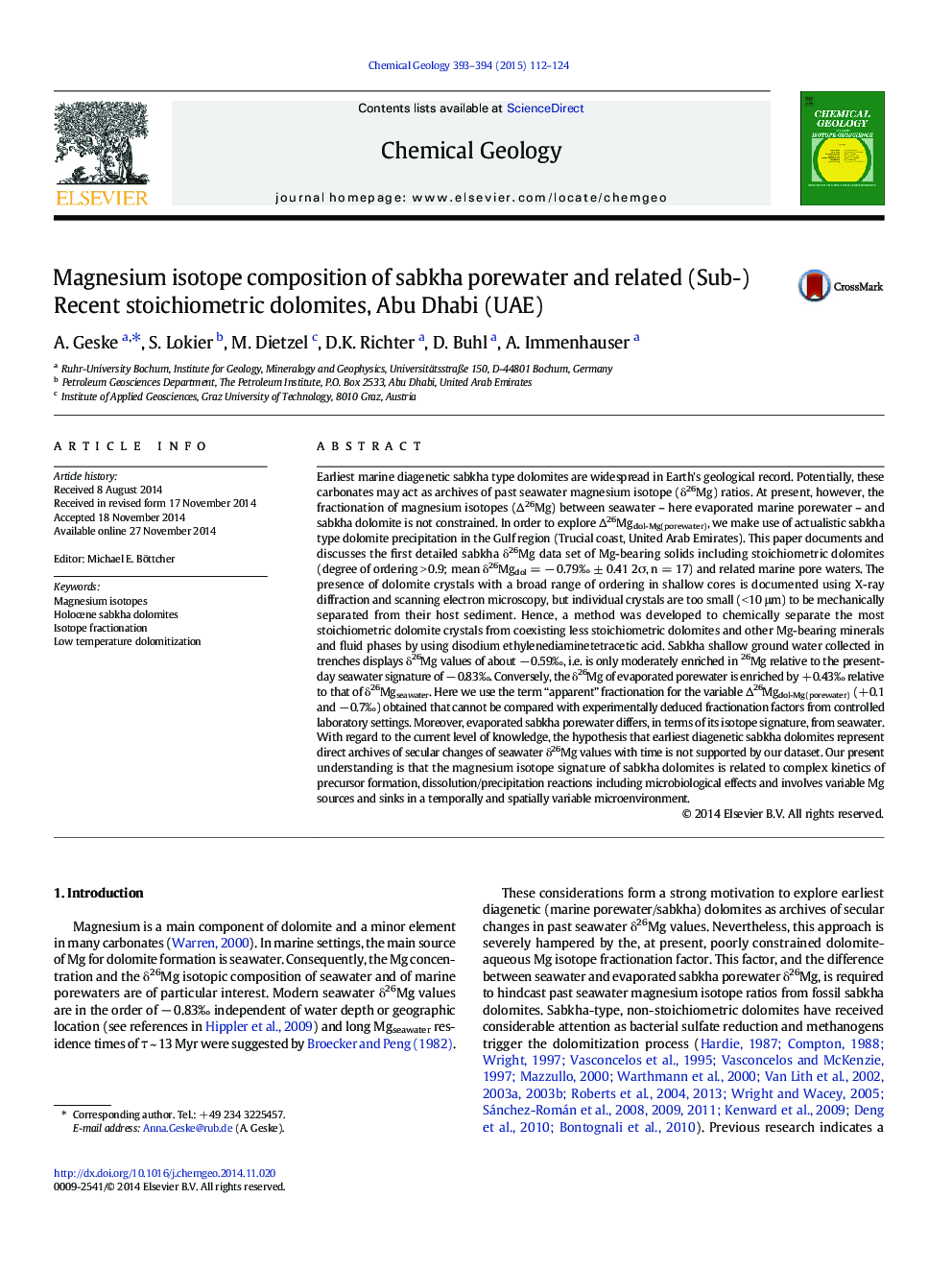| کد مقاله | کد نشریه | سال انتشار | مقاله انگلیسی | نسخه تمام متن |
|---|---|---|---|---|
| 6436494 | 1637579 | 2015 | 13 صفحه PDF | دانلود رایگان |
- High-precision Mg isotope data are reported for Holocene sabkha dolomites and related pore waters.
- Apparent fractionation Î26Mgdol-Mg(porewater) of + 0.1 to â 0.7â° is observed.
- Evaporated porewater is enriched by + 0.43Ⱐin δ26Mg relative to that of modern seawater.
- Variation in δ26Mgdol within the sediment is reported.
- A comparison between δ26Mg ratios of Holocene and Pleistocene sabkha dolomites is drawn.
Earliest marine diagenetic sabkha type dolomites are widespread in Earth's geological record. Potentially, these carbonates may act as archives of past seawater magnesium isotope (δ26Mg) ratios. At present, however, the fractionation of magnesium isotopes (Î26Mg) between seawater - here evaporated marine porewater - and sabkha dolomite is not constrained. In order to explore Î26Mgdol-Mg(porewater), we make use of actualistic sabkha type dolomite precipitation in the Gulf region (Trucial coast, United Arab Emirates). This paper documents and discusses the first detailed sabkha δ26Mg data set of Mg-bearing solids including stoichiometric dolomites (degree of ordering > 0.9; mean δ26Mgdol = â 0.79â°Â ± 0.41 2Ï, n = 17) and related marine pore waters. The presence of dolomite crystals with a broad range of ordering in shallow cores is documented using X-ray diffraction and scanning electron microscopy, but individual crystals are too small (< 10 μm) to be mechanically separated from their host sediment. Hence, a method was developed to chemically separate the most stoichiometric dolomite crystals from coexisting less stoichiometric dolomites and other Mg-bearing minerals and fluid phases by using disodium ethylenediaminetetracetic acid. Sabkha shallow ground water collected in trenches displays δ26Mg values of about â 0.59â°, i.e. is only moderately enriched in 26Mg relative to the present-day seawater signature of â 0.83â°. Conversely, the δ26Mg of evaporated porewater is enriched by + 0.43â° relative to that of δ26Mgseawater. Here we use the term “apparent” fractionation for the variable Î26Mgdol-Mg(porewater) (+ 0.1 and â 0.7â°) obtained that cannot be compared with experimentally deduced fractionation factors from controlled laboratory settings. Moreover, evaporated sabkha porewater differs, in terms of its isotope signature, from seawater. With regard to the current level of knowledge, the hypothesis that earliest diagenetic sabkha dolomites represent direct archives of secular changes of seawater δ26Mg values with time is not supported by our dataset. Our present understanding is that the magnesium isotope signature of sabkha dolomites is related to complex kinetics of precursor formation, dissolution/precipitation reactions including microbiological effects and involves variable Mg sources and sinks in a temporally and spatially variable microenvironment.
Journal: Chemical Geology - Volumes 393â394, 30 January 2015, Pages 112-124
